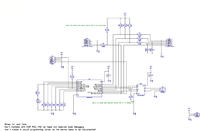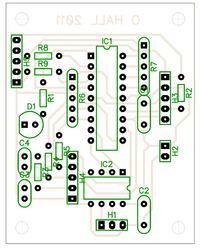ohall
Newbie level 6
Thanks for taking the time to check out the thread FvM.
I've attached a schematic and a PCB layout for info - I don't have any photos handy, and this only relates to my side of things - I don't have schematics for the amp.


Hope you can shed some light on things!
Added: You'll see R10 and R11 don't appear on the PCB - I had to bodge these directly onto the board - Once I can fix the noise issue I'll do a new PCB design.
I've attached a schematic and a PCB layout for info - I don't have any photos handy, and this only relates to my side of things - I don't have schematics for the amp.


Hope you can shed some light on things!
Added: You'll see R10 and R11 don't appear on the PCB - I had to bodge these directly onto the board - Once I can fix the noise issue I'll do a new PCB design.